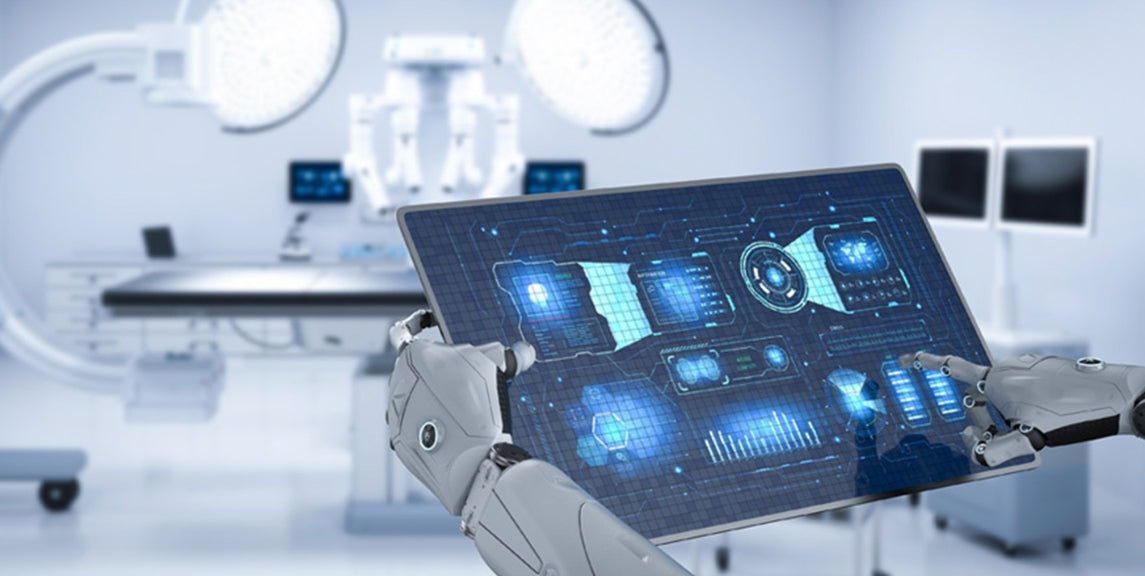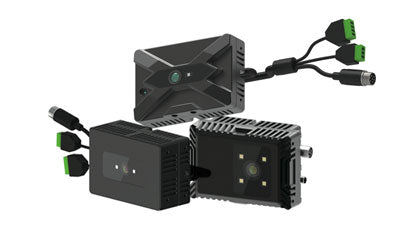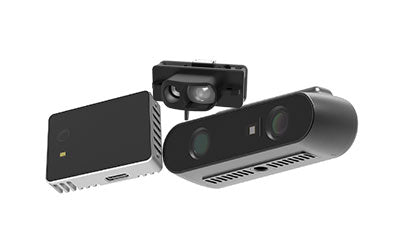TOF in Healthcare: A New Era of Non-Contact Precision Monitoring

In the wake of global digitalization and intelligence, 'non-contact' has become a key term in the medical industry. Especially after the COVID-19 pandemic, traditional methods of vital sign monitoring and health assessment face new challenges, driving a surge in demand for efficient, safe, and contactless detection solutions. In this context, TOF (Time of Flight) technology, with its high precision, non-invasive nature, and real-time responsiveness, is rapidly integrating into vital sign monitoring, elderly care, medical robotics, and rehabilitation training. It plays a pivotal role in building a smarter healthcare ecosystem.
1. Post-Pandemic Demand for “Non-Contact” Solutions Creates Opportunities for TOF
Since 2020, non-contact temperature screening, remote consultations, and automated medical equipment have become widespread. Compared with traditional infrared thermometers or contact-based devices, TOF 3D cameras can accurately capture human depth data and motion dynamics, enabling multidimensional monitoring of patients’ heart rate, respiration rate, and body posture — all while minimizing the risk of cross-infection.
For example, 3D TOF cameras can be deployed in hospital wards, ICUs, isolation rooms, and even temporary medical facilities to collect real-time 3D spatial data and dynamic behavior patterns. These systems can detect abnormal breathing rates, convulsions, reduced movement, or prolonged stillness — all of which signal potential health risks. With the aid of AI algorithms, the system performs smart analysis and sends real-time alerts to medical staff, even in low-light or completely dark environments.
When anomalies are detected, the system instantly notifies on-duty medical personnel via local networks or cloud platforms, enabling rapid remote intervention. Compared with traditional nurse patrols, this intelligent, automated “digital guard” significantly improves resource efficiency and reduces the workload during health crises. TOF technology also helps analyze the transition from lying down to standing, aiding in personalized rehabilitation planning and promoting more refined and intelligent nursing practices.
As the concept of 'non-contact' gains popularity, TOF 3D cameras are also unlocking new applications in smart elderly care, home health monitoring, and remote rehabilitation.
What is ToF 3D?
ToF 3D stands for Time of Flight 3D imaging technology, which calculates the depth of objects by measuring the time it takes for light (usually infrared) to travel to a target and reflect back to the sensor. This allows the device to accurately compute the distance between the object and the camera.
ToF 3D enables fast and accurate depth perception and is commonly used in:
-
Facial recognition (e.g., smartphone face unlock)
-
Gesture control
-
Augmented reality (AR) and virtual reality (VR)
-
Robotic navigation
-
Environment perception in autonomous vehicles
Compared to other 3D sensing technologies such as structured light or stereo vision, ToF 3D performs better in low-light conditions, delivers faster responses, and offers stronger resistance to environmental interference.
2. Three Major Use Cases of TOF Technology in Health Monitoring
1. More Accurate Vital Sign Detection
With ToF 3D depth sensors, systems can non-invasively and continuously capture subtle movements in areas such as the face or chest to extract breathing rate, heart rate, snoring levels, and sleep cycles. This is ideal for long-term monitoring — enhancing comfort and safety while avoiding common issues like sensor detachment found in traditional equipment.
In infant monitoring, TOF can detect signs of apnea or irregular breathing, addressing the limitations of traditional video surveillance at night. In elderly care and chronic disease follow-ups, TOF provides reliable long-term data for remote health management and trend prediction, giving doctors more comprehensive diagnostic insights.
2. Faster Posture Recognition and Fall Detection
In smart elderly care facilities, nursing homes, or rehabilitation centers, TOF cameras can detect whether a person is standing, sitting, lying, getting up, or falling with millimeter-level depth precision. When a fall occurs, alerts are instantly pushed to caregivers’ devices, dramatically shortening response time.
Compared to traditional RGB cameras that rely solely on 2D images, TOF captures full 3D spatial information of the human body. Its strong anti-interference capabilities ensure stable performance even in poorly lit or backlit environments.
More advanced TOF systems can be combined with motion tracking and behavior prediction algorithms to anticipate potential falls. For example, signs like unstable walking, abnormal gait, or sudden shifts in body balance can trigger early warnings — allowing caregivers to intervene before accidents happen, shifting the focus from 'post-incident response' to 'pre-incident prevention.'
3. Smarter Medical Robots and Rehabilitation Training
TOF gives medical robots and rehabilitation systems 3D vision capabilities for high-precision positioning, path planning, and human-machine collaboration in complex medical environments.
In surgical robotics, TOF enables real-time 3D mapping of the surgical area, improving alignment accuracy and obstacle avoidance for enhanced safety. In rehab robotics, TOF combined with 3D SLAM algorithms can track limb movements, evaluate performance, and automatically adjust training pace and angles to reduce injury risk.
Additionally, by integrating RGBD cameras and deep learning models, systems can analyze body posture across multiple angles and body parts. This allows for a shift from 'template-based' to 'personalized' rehabilitation — especially for stroke recovery and joint rehabilitation. In the future, TOF may also integrate with EMG sensors and brain-computer interfaces to further advance intelligent medical robotics.
3. TOF vs. Traditional Detection Technologies: The Next-Generation Solution for Precision and Non-Invasiveness
| Technology | Principle | Advantages | Disadvantages |
|---|---|---|---|
| TOF (Time-of-Flight) Sensor | Measures depth via light pulse timing | High precision, non-contact, strong anti-interference | Slightly higher cost, heavy algorithm reliance |
| Infrared Thermography | Captures thermal radiation images for temperature analysis | Non-contact, long-distance temperature measurement | Accuracy highly affected by ambient temperature |
| Ultrasonic Detection | Uses sound wave reflection for distance estimation | Low cost, simple implementation | Low resolution, incapable of imaging |
Compared to traditional infrared or ultrasound solutions, TOF achieves millimeter-level depth measurement and high-frame-rate dynamic image capture, making it particularly well-suited for the medical field’s stringent demands for precision and safety.
4. Building the Future of Smart Healthcare: TOF Integrates with AI and Robotics
As smart healthcare continues to evolve, TOF technology is increasingly integrated with robotic 3D vision systems, AGV navigation methods, and AI-assisted diagnostic platforms. Together, these technologies are shaping a more automated, intelligent, and human-centric healthcare service system.
Multi-Scenario Integration: Enhancing Smart Hospital Efficiency
-
Automated Guided Vehicles (AGVs) equipped with TOF navigation technology enable contactless delivery of medications across wards, pharmacies, and operating rooms. Compared to traditional magnetic stripe or QR-code navigation, TOF scans the environment in real-time to build high-precision 3D maps. It flexibly avoids dynamic obstacles like patients and nurses, significantly improving path planning accuracy and operational safety.
-
Medical service robots with TOF 3D cameras can rapidly recognize patients, verify identities, and navigate narrow corridors with efficient obstacle avoidance. In scenarios such as registration guidance, sample delivery, and companion interactions, TOF greatly enhances the robots’ environmental perception, enabling better human-robot collaboration.
-
Rehabilitation training platforms that combine TOF and machine vision systems can analyze patients’ limb movement trajectories and posture in real time, determining whether movements align with medical instructions. During muscle or neurological rehabilitation, the system adjusts training intensity dynamically based on patient performance — achieving precision rehabilitation and personalized treatment plans.
TOF Empowering AI and Robotics: Unlocking Future Possibilities
As AI algorithms continue to advance, the high-precision depth data provided by TOF sensors offer enhanced spatial awareness. In AI-assisted diagnosis, TOF can capture key indicators such as body posture, position changes, and gait patterns, supporting early detection of neurological disorders, Parkinson’s disease, and other movement-related conditions.
In surgical settings, TOF can be used to construct real-time 3D models of surgical or lesion areas, providing surgeons with a spatial perspective to assist in decision-making — potentially enabling image-guided minimally invasive surgeries. When combined with AI image recognition and deep learning, TOF could one day allow fast visual analysis of specific tissues without the need for traditional CT/MRI scans.
Core Enabler: TOF Accelerates the Rise of the 3D Machine Vision Market
As a high-performance 3D sensing technology, TOF’s high frame rate, real-time responsiveness, and strong resistance to light interference are making it a standard component in robotic vision systems. In the rapidly growing global 3D machine vision market, TOF’s market share is steadily rising, with broad applications across medical robotics, security monitoring, smart manufacturing, autonomous driving, and other frontier fields.
According to market research agencies, the 3D vision market is growing at a compound annual growth rate (CAGR) of over 20%. Among the sub-technologies in this sector, TOF is one of the fastest-growing segments — indicating enormous potential for the future.
5. Conclusion: TOF is Reshaping Medical Diagnostics and Leading the Contactless Healthcare Trend
From remote monitoring in ICU wards, to fall detection in nursing homes, to motion guidance in rehabilitation centers, TOF technology is establishing a new paradigm in medical services through its precision, efficiency, and non-contact nature. As the integration of 3D TOF cameras with AI algorithms and intelligent robotics continues to mature, TOF is poised to play an increasingly vital role in the future medical ecosystem.
Just as semiconductors in chips catalyzed the AI computing revolution, TOF — as a highly integrated 3D perception sensor — is becoming the sensory engine of next-generation smart healthcare.
Synexens 3D Camera Of ToF Sensor Soild-State Lidar_CS20
After-sales Support:
Our professional technical team specializing in 3D camera ranging is ready to assist you at any time. Whether you encounter any issues with your TOF camera after purchase or need clarification on TOF technology, feel free to contact us anytime. We are committed to providing high-quality technical after-sales service and user experience, ensuring your peace of mind in both shopping and using our products
-
Publié dans
CS20






